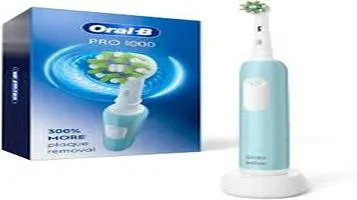Plant Markers – An Essential Tool for Every Gardener
Plant markers are tools used to identify and label plants in gardens, greenhouses, or botanical settings. They help in organizing and managing plant collections by providing essential information such as the plant's common name, scientific name, planting date, and care instructions. Plant markers come in various materials, including plastic, metal, wood, and slate, each offering different levels of durability and aesthetic appeal. Some markers are designed for temporary use, while others are more permanent, able to withstand weather conditions over time. They can be customized with pre-printed labels or handwritten notes. Plant markers not only enhance the visual organization of a garden but also serve as educational tools, making them valuable for both amateur gardeners and professional horticulturists alike.

Gardening is an art that requires patience, knowledge, and attention to detail. One of the often-overlooked tools in a gardener’s arsenal is the humble plant marker. These small, yet indispensable items can dramatically enhance the gardening experience, ensuring that every plant is correctly identified and cared for. In this review, we will delve into the various types of plant markers available, their benefits, and why they should be considered essential for any gardener, whether novice or expert.
Types of Plant Markers
Plant markers come in a variety of materials and designs, each catering to different gardening needs and aesthetics. The most common types include:
1. Plastic Plant Markers: These are perhaps the most ubiquitous. They are affordable, lightweight, and come in an array of colors. They can be easily written on with a permanent marker or paint pen. However, they may become brittle and fade over time when exposed to the elements.
2. Wooden Plant Markers: These offer a more natural and rustic look. They are eco-friendly and can blend seamlessly into a garden's aesthetic. On the downside, they can degrade over time, especially in wet conditions, and may need replacing every season.
3. Metal Plant Markers: These are the most durable and long-lasting. Made from materials like stainless steel or copper, they can withstand the elements for years. They also add a touch of elegance to the garden. However, they are generally more expensive and can be harder to inscribe.
4. Slate Plant Markers: These offer a stylish and durable option. They can be written on with chalk or special markers designed for slate. They are resistant to weather but can be more fragile and prone to breaking if not handled carefully.
Benefits of Using Plant Markers
1. Organization and Identification
One of the primary benefits of using plant markers is the organization they bring to a garden. Whether you have a small herb garden or a sprawling vegetable patch, plant markers help you keep track of what you’ve planted and where. This is particularly useful during the early stages of growth when many plants look similar. Proper identification ensures that you can provide each plant with the specific care it needs, from watering schedules to nutrient requirements.
2. Educational Tool
Plant markers can serve as an educational tool, especially for children or beginner gardeners. By labeling plants with both their common and scientific names, markers can help gardeners learn and remember plant names, characteristics, and care instructions. This can foster a deeper appreciation and understanding of horticulture.
3. Aesthetic Appeal
Well-designed plant markers can add a decorative element to your garden. Whether you choose elegant metal markers or charming handmade wooden ones, they can enhance the overall look of your garden. Some gardeners even opt to create their own custom markers, adding a personal touch to their garden space.
4. Record Keeping
For serious gardeners and horticulturists, plant markers are an essential tool for record-keeping. By noting the planting date, variety, and other key information on markers, gardeners can track the progress and success of different plants. This information can be invaluable for planning future gardens and improving cultivation techniques.
Considerations When Choosing Plant Markers
When selecting plant markers, there are several factors to consider to ensure they meet your specific needs:
1. Durability: If you live in an area with extreme weather conditions, opt for markers made from sturdy materials like metal or high-quality plastic to ensure they last throughout the season.
2. Visibility: Choose markers that are easy to read. Bright colors or larger sizes can help make the markers more visible, especially in dense foliage.
3. Ease of Use: Consider how easy it is to write on the markers. Some materials may require special pens or labels, so ensure you have the right tools on hand.
4. Environmental Impact: For eco-conscious gardeners, opting for biodegradable or recyclable materials can minimize environmental impact.
Conclusion
In conclusion, plant markers are much more than mere garden accessories; they are fundamental tools that bring order, knowledge, and beauty to the gardening experience. Whether you are an experienced gardener looking to refine your plant organization or a beginner seeking to learn and grow, investing in quality plant markers will undoubtedly enhance your gardening journey. With a wide range of options available, you can find markers that not only meet your practical needs but also complement your garden’s aesthetic. So next time you plan a planting session, don’t overlook the importance of these small, yet mighty tools. Happy gardening!






